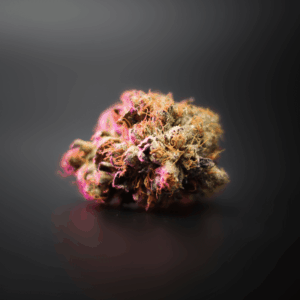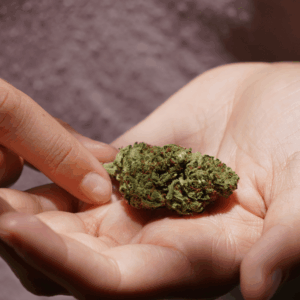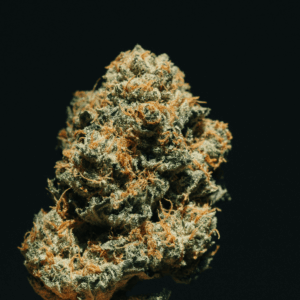When people think of cannabis, the conversation usually begins with THC and CBD. While these cannabinoids play a starring role, they’re not the whole story — Enter: pinene terpene effects. The cannabis plant is packed with plant compounds known as terpenes, which not only shape its delightful aroma but also deliver distinct therapeutic benefits. Among the most abundant terpenes found in cannabis, pinene stands out. If you’ve ever walked through a dense forest of pine trees and inhaled the sharp, pine-like scent, you’ve already experienced pinene in its most natural form.
This abundant terpene is more than just a pleasant smell. The effects of pinene range from anti-inflammatory properties to possible neuroprotective properties, making it one of the most studied and celebrated terpenes in cannabis research.
Whether you’re interested in medicinal cannabis, cannabis products for relaxation, or just curious about how other terpenes shape your experience, pinene deserves your attention. In this blog, we’ll explore everything from the chemical structures of pinene to its potential health benefits, the cannabis strains that are especially pinene rich, and why understanding terpenes can change the way you think about cannabis.
What Is Pinene?
At its core, pinene is a common terpene and one of the most abundant terpenes in nature. It’s classified as a monoterpene, meaning it is built from two isoprene units and has a relatively simple chemical structure. Known scientifically as C10H16, pinene is responsible for that sharp, refreshing woody aroma we associate with pine needles, pine resin, and forest air.
In the cannabis plant, pinene contributes not only to the fragrance but also to the therapeutic effects users experience. Cannabis isn’t the only source, however. Pinene is found in hundreds of plant species, including rosemary, basil, dill, parsley, and even orange peels. Its widespread presence in traditional medicines across cultures speaks to its medicinal value, from treating respiratory issues to promoting relaxation and focus.

The Two Types: Alpha-Pinene vs. Beta-Pinene
Pinene comes in two structural isomers: alpha pinene (α pinene) and beta pinene (β pinene). Though they share the same molecular formula, their chemical structures differ slightly, which changes their woody scent and therapeutic benefits.
- Alpha-pinene (α pinene / a pinene): This is the most common type, often referred to as the most abundant terpene in nature. Found in pine needles, rosemary, eucalyptus, and cannabis, α pinene is known for its crisp, refreshing pine-like scent and anti-inflammatory activity.
- Beta-pinene (β pinene / b pinene): Known for its more woody aroma with herbal undertones, β pinene appears in pine resin, parsley, basil, and certain cannabis strains. It also demonstrates unique antimicrobial properties and potential cancer treatment applications.
Both forms are structural isomers with carbon atoms arranged differently, and both play significant roles in the effects of pinene when consumed through cannabis or essential oils.
The Aroma and Flavor of Pinene
The first thing most people notice about pinene is its delightful aroma. Imagine breaking apart a sprig of rosemary or walking through a grove of pine trees—that crisp, earthy, pine-like scent is pinene at work. In cannabis, this woody scent mixes with other plant compounds to shape the overall terpene profile of the strain.
This aromatic compound doesn’t just smell good—it also enhances the cannabis experience. A pinene rich strain can bring out flavors that feel refreshing and forest-like, offering users a sensory journey that extends beyond THC and CBD.
Where Is Pinene Found in Nature?
Pinene is widespread across the natural world. Besides cannabis, it’s found in:
- Pine needles and pine resin
- Herbs like rosemary, basil, dill, and parsley
- Citrus peels
- Sage and eucalyptus
- Coniferous plant species
Historically, pinene has been a part of traditional medicines worldwide. In traditional Chinese medicine, it was used to treat digestive issues and respiratory discomfort. In Europe, essential oils extracted from pine resin were used in traditional medicines for centuries, believed to cleanse the air and boost the immune system. Clearly, pinene plays an important role in both ancient and modern healing practices.
How Pinene Works in the Body
Understanding the effects of pinene requires looking at its interaction with the endocannabinoid system (ECS). While cannabinoids like THC bind directly to CB1 and CB2 receptors, pinene interacts differently. It influences neurotransmitter activity and even modulates enzymes like acetylcholinesterase, which plays a role in memory and cognitive function.
The entourage effect suggests that pinene works best when combined with other terpenes and cannabinoids. This synergy explains why cannabis pinene may feel different from inhaling pinene in isolation through essential oils. The combination of other compounds, such as THC, CBD, and terpenes like myrcene or limonene, can amplify or balance the therapeutic effects.
Pinene and the Entourage Effect
The entourage effect is one of the most fascinating aspects of cannabis science. It refers to the idea that cannabinoids and terpenes don’t work in isolation but instead combine to create a broader range of potential benefits. In this context, terpene pinene becomes especially interesting.
For example, while THC is known to sometimes cause memory impairment, α pinene may counteract this effect by supporting acetylcholine activity in the brain. Similarly, other terpenes like limonene and linalool can mix with pinene to either energize, relax, or soothe depending on the terpene profile of the strain. This makes pinene rich cannabis strains particularly appealing to those seeking therapeutic benefits without overwhelming side effects.

Therapeutic Effects of Pinene: An Overview
Pinene isn’t just about smell—it’s about therapeutic effects. Research into cannabis terpenes and other plant compounds shows that pinene could offer a wide range of potential health benefits, including:
- Anti-inflammatory effects that may help relieve pain and swelling.
- Antimicrobial properties to fight bacterial and fungal infections.
- Neuroprotective properties that could support brain health.
- Anxiety reduction and mood balancing.
- Respiratory support through bronchodilation.
These potential benefits make pinene a star player in medicinal cannabis, where the focus is not just on intoxication but on therapeutic benefits and long-term health benefits.
Anti-Inflammatory Properties
One of the most studied aspects of pinene is its anti-inflammatory activity. Studies suggest that α pinene in particular interacts with immune cells to reduce inflammation, which may help manage conditions like arthritis, asthma, and autoimmune disorders.
The anti-inflammatory effects of pinene also tie into its ability to relieve pain, especially when combined with cannabinoids in medicinal cannabis. For those seeking cannabis products for wellness rather than recreation, a pinene rich strain can provide noticeable relief.
Antimicrobial and Antibacterial Benefits
Pinene demonstrates notable antimicrobial properties, making it useful against harmful bacteria and fungal infections. Both alpha pinene and beta pinene have been studied for their ability to disrupt microbial growth, which explains their inclusion in essential oils and natural cleaning products.
This antimicrobial power also highlights the medicinal value of pinene beyond cannabis, as it contributes to the safety and healing properties of various plant species.
Cognitive Benefits: Focus and Memory
Unlike THC, which may lead to memory impairment, pinene may actually enhance memory and focus. Through its influence on acetylcholinesterase, terpene pinene supports neurotransmission linked to learning and recall.
For cannabis users, this means that cannabis pinene could help counterbalance some of the less desirable effects of THC. This makes pinene rich strains especially appealing for daytime use, where productivity and mental clarity matter.

Anti-Anxiety and Mood Effects
Pinene has also been linked to anxiety reduction. While some cannabis users find that THC heightens anxious feelings, pinene cannabis may help soften those effects. Its calming yet alert qualities make it different from indica strains known for heavy sedation, offering a lighter form of stress relief without drowsiness.
Respiratory Health and Pinene
Pinene’s bronchodilator effects are perhaps one of its most fascinating features. Historically, traditional medicines used pine resin and essential oils to treat respiratory issues. Research suggests that levels of pinene inhaled through cannabis may help open airways, making breathing easier for people with asthma or other respiratory conditions.
This property also contributes to the sense of freshness when walking among pine trees—your lungs may actually be benefiting from trace amounts of pinene in the air.
Potential Cancer-Fighting Properties
Early research suggests that pinene could play a role in cancer treatment. Laboratory studies indicate that both α pinene and β pinene may inhibit tumor growth or support therapies that target cancer cells. While more studies are needed, this adds another layer to the potential benefits of pinene cannabis and other plant compounds.
Side Effects and Safety Considerations
Despite its many potential health benefits, pinene isn’t without limitations. In high concentrations, it may cause irritation or allergic reactions. Some users may also find that levels of pinene contribute to mild discomfort.
When consumed in cannabis products, however, pinene is generally well tolerated, thanks to the balancing effect of other compounds. Like all aspects of cannabis use, moderation and attention to quality matter.
Cannabis Strains High in Pinene
Not all cannabis strains contain the same terpene profile. While most cannabis strains contain some level of pinene, only pinene rich strains deliver enough to make a noticeable difference. Popular pinene rich cannabis strains include:
- Jack Herer (cannabis sativa): Known for its uplifting energy and creativity, this strain is a classic pinene cannabis example.
- Blue Dream: A balanced hybrid offering both relaxation and focus.
- Dutch Treat: Famous for its woody aroma and mental clarity.
- Trainwreck: A stimulating strain with strong therapeutic effects.
- Romulan (indica strains): Heavy body relaxation with the added benefit of pinene’s focus-enhancing qualities.
These strains rich in pinene highlight how different factors contribute to user experience. Whether you’re after therapeutic benefits, anti-inflammatory effects, or just a refreshing woody scent, there’s a pinene rich strain for you.

Everyday Uses Beyond Cannabis
Pinene isn’t confined to cannabis. Its presence in essential oils, aromatherapy, and household products makes it part of everyday life. From air fresheners to natural insect repellents, pinene’s woody scent and antimicrobial properties give it broad utility. Even traditional medicines and practices like forest bathing highlight how pinene plays a role in wellness outside of cannabis culture.
Pinene in the Cannabis Industry
In today’s cannabis market, consumers are becoming more educated about cannabis terpenes. Dispensaries now highlight the terpene profile of cannabis products, and pinene rich strains often stand out as premium options.
Growers recognize that levels of pinene and other terpenes can shape both the medicinal value and consumer appeal of their flower. From medicinal cannabis to recreational offerings, pinene cannabis demonstrates how terpenes are changing the way people think about cannabis.

Conclusion: Why Pinene Deserves Attention
Pinene is more than just a delightful aroma. As one of the most abundant terpenes in nature and cannabis, it delivers therapeutic effects ranging from anti-inflammatory properties and anxiety reduction to neuroprotective properties and possible roles in cancer treatment. Found in pine needles, pine resin, and countless plant species, it represents the powerful role that other plant compounds play in shaping health and wellness.
Whether you’re exploring medicinal cannabis, seeking cannabis products with added therapeutic benefits, or just curious about how cannabis terpenes influence your experience, pinene is worth understanding. With its woody aroma, pine-like scent, and wide range of potential benefits, it’s clear that pinene plays an important role in cannabis science and beyond.
Frequently Asked Questions
1. Is pinene a sativa or indica?
Pinene itself isn’t tied to either sativa strains or indica strains—it’s a common terpene found in both. However, many people associate cannabis sativa with higher levels of α pinene, since it often contributes to the uplifting and clear-headed qualities of certain strains. Still, you’ll find pinene rich strains across both categories, including hybrids.
2. Can pinene cause anxiety?
Generally, pinene is thought to help with anxiety reduction rather than cause it. Because it may counteract THC-related memory impairment and mental fog, some users actually find pinene to be grounding and calming. That said, everyone’s body chemistry is different, and levels of pinene combined with high THC may feel overwhelming for some.
3. Is pinene good for pain?
Yes—research suggests that pinene terpene effects include anti-inflammatory properties that can help relieve pain and discomfort. Many people turn to pinene rich cannabis strains or medicinal cannabis products specifically for pain relief, especially when dealing with chronic inflammation or arthritis.
4. Is pinene sedative?
Unlike some indica strains high in myrcene or linalool, pinene is not typically considered sedative. In fact, α pinene often promotes alertness and focus rather than a heavy body high. That said, when paired with other terpenes and cannabinoids in a strain with sedative effects, pinene can play a balancing role in the overall experience.
















